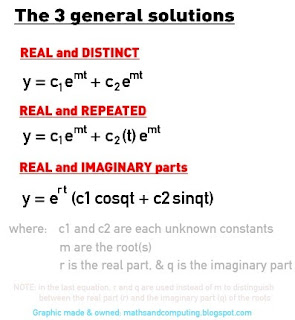 To find eigenvalues of a matrix, subtract the unknown value λ (lambda, a letter of the greek alphabet) from all values on the main diagonal.
To find eigenvalues of a matrix, subtract the unknown value λ (lambda, a letter of the greek alphabet) from all values on the main diagonal.
Then multiply the values on the main diagonal, the secondary diagonal, and then subtract them. Then put that equation to zero. Then solve for λ.
This value or values is/are the eigenvalue(s).
(Click on the images on the right to view pictorial representation in full size).
DEFINITIONS (in basic terms)
Main Diagonal - the diagonal that runs from the top-left to the bottom-right of the matrix.
Secondary Diagonal - the diagonal that runs from the top-right to the bottom-left of the matrix.





